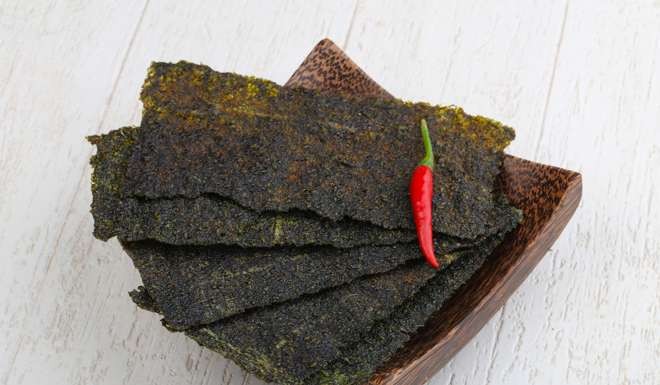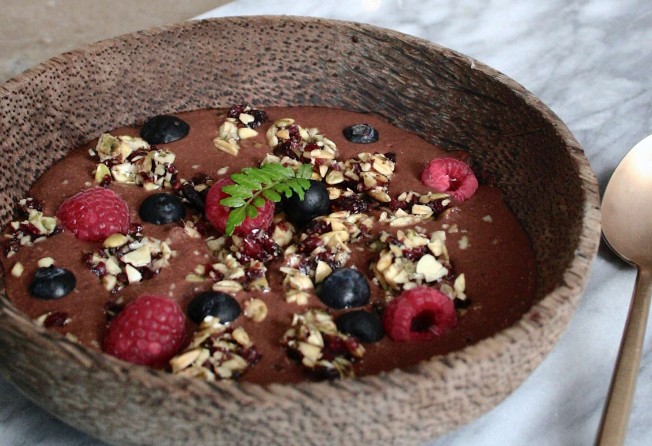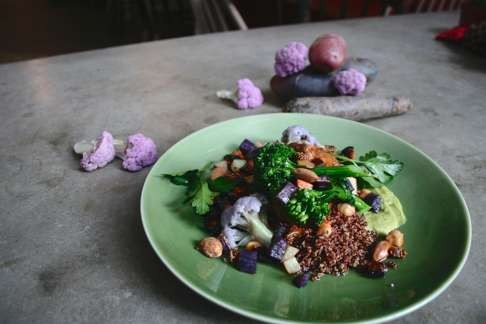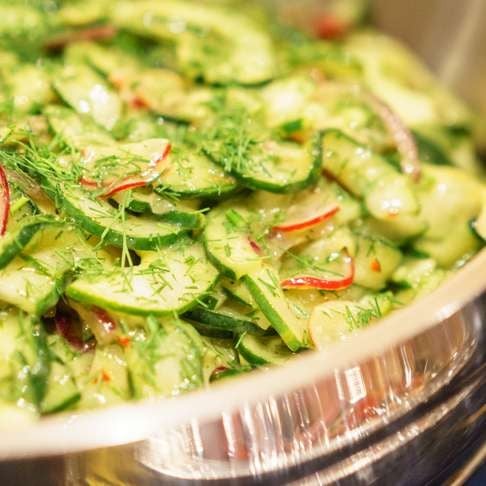
The eight hottest health foods trends for 2017, from seaweed pasta and purple carrots to soup cleanses and superfood smoothies
Kale has gone stale, coconuts will make a comeback, and we’ll be swapping happy hours and hangovers for group training and mindful interaction, the experts say

Like fashion, health food trends can be fickle. What was sizzling one season could be fizzling the next. Kale, for example, that so-called superfood leafy green that everyone wanted to eat (and be seen eating) a couple of years ago is now as out of style as baggy pants. In vogue for 2017 instead is seaweed, said to be filled with antioxidants, calcium and a broad range of vitamins, and can do wonders for your hormones with its rich iodine content.
What else is trending in the health food world for 2017? Local and international industry experts let us in on the eight hottest trends:

1. Seaweed
You are probably already having it through sushi, but expect to see seaweed increasingly used in different forms and dishes, from salads to pasta and even desserts. Peggy Chan, founder and chef of Grassroots Pantry, a vegetarian restaurant in Sheung Wan, says: “You can get that dose of omega-3 fatty acids and umami by creating all kinds of fun snacks, main meals and breakfast items by using all types of seaweed.” With about 3,500 types of seaweed, the possibilities seem endless.
Baum + Whiteman, a restaurant and hotel consultancy, also identified seaweed as a trend in its recent report, “The 13 Hottest Food & Beverage Trends In Restaurant & Hotel Dining For 2017”. “One reason for the rise of various seaweeds is the ramen explosion all across the country, where seaweed is the foundation of many broths. Another reason is seaweed packs a wallop of umami and chefs are sneaking it into finishing salts and oils, in fish sauce, incorporated into pasta,” the report states.

2. Purple vegetables
From potatoes to rice, carrots to cauliflower, fruits and vegetables in the royal hue will dominate the food rainbow. “It’s all over our menu,” says Chan. “Purple potatoes, carrots, cauliflower, Brussel sprouts, acai – all rich in antioxidants.” The trend is backed by US grocery chain Whole Foods, which produces an annual list compiled by experts who track consumer behaviour at more than 400 of the chain’s stores.
3. Coconut everything
Coconut water and oil was a trend from a few years ago, but the tropical fruit strikes back in 2017 – in other forms such as coconut yogurt. Moises Mehl, raw food chef of nood food, says: “The great benefits of coconut water are now almost common knowledge. It is super hydrating, natural and extremely delicious. However, not nearly as many people know about the benefits of coconut by-products.

“Coconuts are actually extremely versatile and you can use almost all parts of it to make healthy essential kitchen ingredients: coconut oil, butter, coconut palm sugar, syrups – the list goes on. These coconut by-products make for much healthier and natural alternatives to traditional processed ingredients, because they are full of good fats and essential minerals while being paleo friendly, gluten-free and low in carbs.”
4. Soup cleanses
Cleansing by drinking only juice for a few days has been a popular way to “detox”, with juice shops proliferating all over the city. In 2017 the cleanse takes on a new spin: with soups. Genie Juicery, a pioneer of the juice cleanse in Hong Kong, recently launched a soup cleanse. The company’s co-founder Melanie Barnish says: “A soup cleanse is a heartier and hotter method of getting your essential daily dose. With so many different types of juice cleanse available, we wanted to provide something new to the market that would keep people full and satisfied during the colder winter months.”

5. Adaptogens
“Adaptogens are natural ingredients that can help regulate the body more efficiently to handle stress. And although adaptogens such as ginseng, have been around for a long time, there is a shift in the way people are using them,” says Mehl. “Whereas before, these ingredients were regarded as ‘medicinal’ products that were only taken when needed, now they’re being taken more casually with everyday food.”
An example is maca, also known as the “Peruvian ginseng”. Mehl says: “With a spoonful of maca added in the smoothies, it’s probably one of the tastiest and easiest ways to dust off some of the daily stress. Perfect for keeping your Zen after a yoga session.”

6. Part-time vegetarians
More people are choosing to become part-time vegetarians, says Mehl, for their own personal reasons, whether it’s health, environment, religion or something else. “We regularly talk to our customers, and they tell us that they would eat meat and seafood for most of the week but just go completely vegetarian for a day or two. As vegetarian diets become more ‘socially acceptable’ and dishes easily accessible, more people are looking for different types of plant-based diets,” he says.
Barnish says plant-based protein consumption will concurrently increase. “It has been proven that there is nothing your body needs that cannot be provided by plant-based foods. In fact, there is an almost equal amount protein per gram of broccoli as there is in the same amount of beef, and you can get a great volume of protein from foods such as beans and lentils.”
Chan adds that meat substitutes from food technology companies will also become more popular. “Food tech companies such as Beyond Meat, Impossible Foods and Hampton Creek have invested millions into the research and years of dedicated engineering to recreate meat using 100 per cent non-GMO plant-protein that is now widely available on supermarket shelves,” she says.
Baum + Whiteman note that avant gardists are opening vegetable “butcher shops”: “There’s the Herbivorous Butcher in Minneapolis, YamChops in Toronto, The Vegetable Butcher in The Hague, La Carnicera Vegetariana in Barcelona, and Suzy Spoon’s Vegetarian Butcher in Sydney. These “butchers” are fabricating imitation but lookalike burgers, sausages, meatballs, salami, turkey, roast beef, even fake ribs for barbecue-obsessed vegans.”
Overall, vegetables in 2017 “will extend their domination of the dinner plate, shoving animal protein to the edges, or off the plate altogether”, says the Baum + Whiteman report. “We’re seeing a surge of serious chefs tilting their menus towards vegetables, but equally significant is the commotion among fast-casual chains.”
7. Consuming less, but with more substance
“Large portions are out. Empty calories are out,” says Chan. “The shift will be to incorporate as much nutrients and bioavailable minerals with every calorie intake, with the help of superfoods such as chia seeds in breakfast oats, whole grains, tree nut sauces and superfood smoothies – reinventing the phrase ‘value for money’.”
8. A more sober social scene
“With a global movement towards health, next year we will see people switching happy hour and horrible hangovers with group training, nutritious eating and mindful interaction,” Barnish says. “We have already started to see a major shift towards people choosing a hike or a jog over going to the pub, and simply taking a stroll up the Morning Trail at 8am on a Saturday will demonstrate that.”